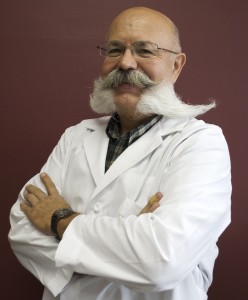Here are the results of our latest ZimmPoll. In answer to the question, “Do you participate in social media?” the majority say they do. According to the numbers, 53% say yes and they post regularly, 28% say yes but they rarely create their own posts, 27% say no and they never will and only 1% say no but plan to start participating soon. Thanks to all our poll takers. Quite a few more did in our second week!
 It is possible, as has been pointed out to me, that our results might be skewed slightly since so much of this particular poll question is being seen by those who already participate in social media. I can see that. However, we have a lot of website visitors who I’m sure are not yet social media savvy. If you’re not then I recommend you get started. For motivation, you might consider getting on Twitter and participating in the weekly BioChat session each Wed. at 7pm ET. It will start back up after a holiday break in January.
It is possible, as has been pointed out to me, that our results might be skewed slightly since so much of this particular poll question is being seen by those who already participate in social media. I can see that. However, we have a lot of website visitors who I’m sure are not yet social media savvy. If you’re not then I recommend you get started. For motivation, you might consider getting on Twitter and participating in the weekly BioChat session each Wed. at 7pm ET. It will start back up after a holiday break in January.
The new poll is now live and the question is, “Do you think the general consumer perception of agriculture changed in 2010?” This should resonate since the whole topic of consumer perception of farming is so top of mind right now. In fact, it has given rise to new agricultural organization efforts like the USFRA and of course it is one of the goals of the AgChat Foundation to help consumers better understand where their food comes from and who is producing it and how. Can’t wait to see the results from this one!
![]() ZimmPoll is sponsored by Rhea+Kaiser, a full-service advertising/public relations agency.
ZimmPoll is sponsored by Rhea+Kaiser, a full-service advertising/public relations agency.










 If Santa has a Droid, he can now easily find ethanol blended fuel for his Flex Fuel Vehicle sleigh on Christmas.
If Santa has a Droid, he can now easily find ethanol blended fuel for his Flex Fuel Vehicle sleigh on Christmas. Similar to the Flex-Fuel Station Locator, the RFA has developed an E85 Point of Interest (POI) application for Garmin and TomTom GPS devices. Updated quarterly, these GPS applications accurately guide drivers to over 2,400 E85 fueling stations throughout the United States. Step-by-step downloading instructions are available here . There, consumers can download individual state data, a combination of states, or national data directly from their computer to the GPS device. The database for both TomTom and Garmin can be found at
Similar to the Flex-Fuel Station Locator, the RFA has developed an E85 Point of Interest (POI) application for Garmin and TomTom GPS devices. Updated quarterly, these GPS applications accurately guide drivers to over 2,400 E85 fueling stations throughout the United States. Step-by-step downloading instructions are available here . There, consumers can download individual state data, a combination of states, or national data directly from their computer to the GPS device. The database for both TomTom and Garmin can be found at 
